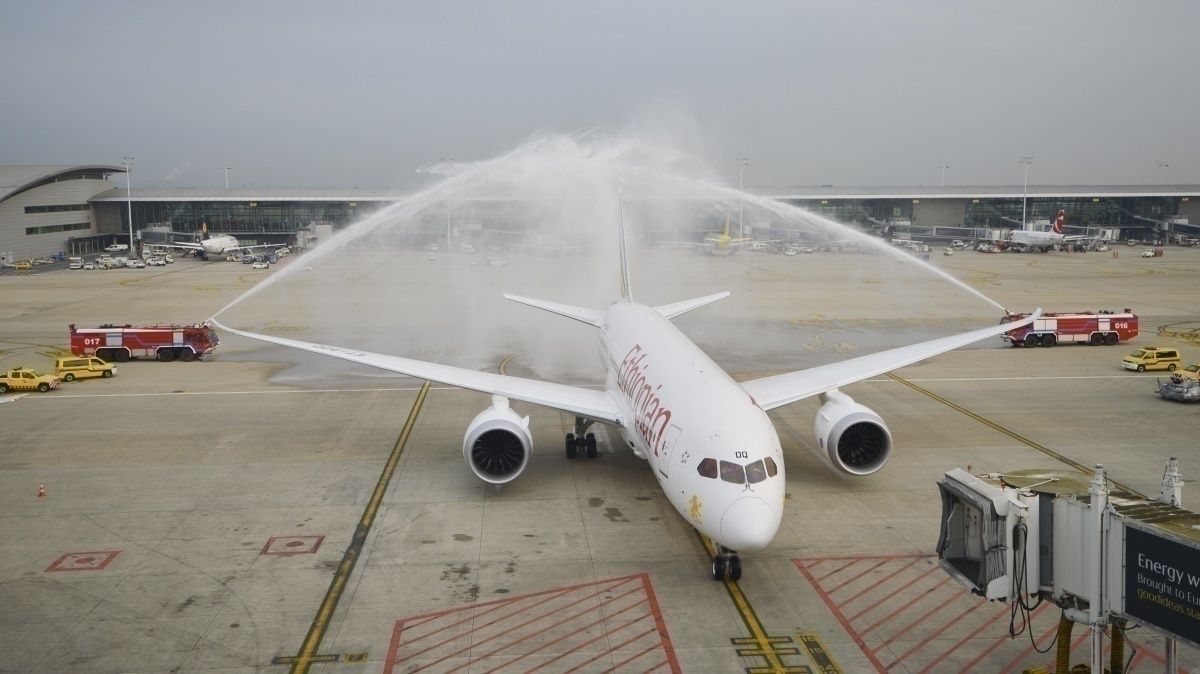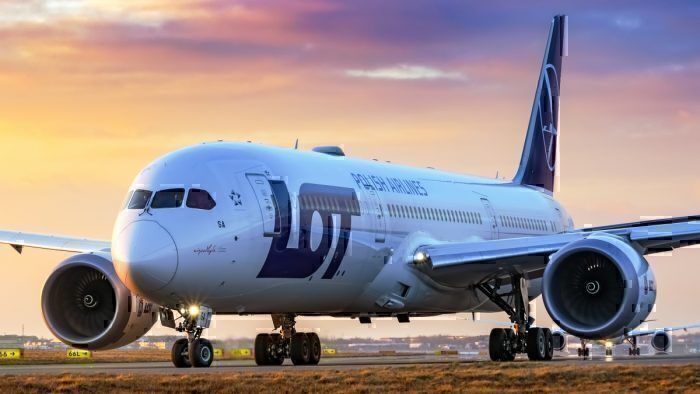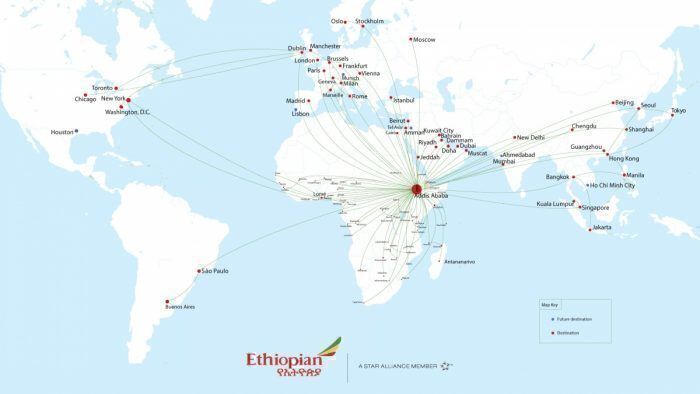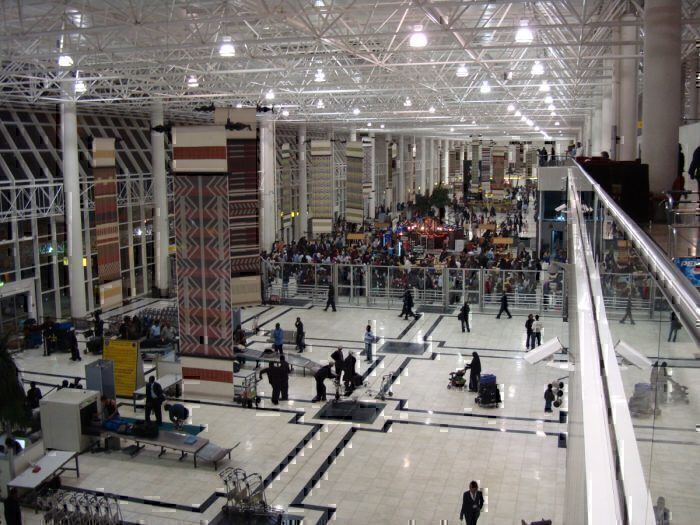Ethiopian Airlines has floated plans to build a new $5bn mega airport to serve as its hub in Addis Ababa. With capacity for up to 100m passengers, this could become a valuable transfer hub, not just for Africa but between Asia and the Americas too. Could Ethiopian eventually become a major transfer airline to rival Middle East giant Emirates? Let’s take a look.
The next Emirates?
Everyone wants to be the new Emirates. The airline has successfully forged a path over the years that has turned a new airline in a relatively low touristed country into one of the world’s biggest connectivity providers. Part of this growth was thanks to Emirates’ laser-sharp focus on a hub and spoke business model, while also being driven by the carrier’s unique geographical location between Asia, Europe and Africa.
But Emirates is not the only airline that has this natural advantage. Their niche as a transfer airline is being rivaled by up and coming carriers from neighboring regions. LOT Polish is undergoing rapid expansion, and with the construction of a new airport for Warsaw on the cards, it has high hopes of becoming a major transfer airline between east and west.
Turkish Airlines too is breaking out of its local market and is now offering more destinations to its passengers than any other airline in the world. Operating out of the new Istanbul Airport, there is still plenty of room for the airline to grow and to expand its network reach even further.
While these airlines have got the jump on creating the next Dubai-like hub, there’s a new kid on the block who could end up being everything these rivals want to be, and a whole lot more too.
The Ethiopian advantage
Ethiopian’s hub at Addis Ababa isn’t a million miles away from Dubai. In fact, its longitudinally roughly equidistant between Dubai and Istanbul, at 38.7°E compared to 55.2 and 28.9 respectively. This puts it in a strong position to provide transfer flights between Asia and Europe/North America in the same way Emirates and Turkish do.
However, there’s another strong advantage for Ethiopian over the two other carriers. At just under 9° north of the Equator, Addis Ababa is in a strong position to connect passengers directly with, well, the whole of the world. Using its long-range Boeing 787-8, Ethiopian has the potential to reach all of South America, all of Australia, all of Asia and Europe, just missing out on some parts of Mexico and New Zealand.
Of course, Emirates can do that too. With its mega-fleet of A380s, clocking up a max range of 15,200km, nowhere is out of reach for the Dubai based carrier. Turkish too can reach everywhere except New Zealand with its 787-9. However, the location of ADD gives Ethiopian more scope to be flexible with it is fleet, and to assign smaller aircraft to long and thin routes, to connect onwards through its hub.
The demand is growing
Demand for connecting services at Bole Airport is on the up. Skift reports that, in 2018, ADD overtook Dubai as the top transit hub for long haul passengers heading into Africa. Last year, China funded an expansion of Bole Airport, taking it up to a capacity of 22 million passengers a year.
Figures from 2018 indicate that more than 12 million passengers were served in 2018, making Bole Africa’s third-largest airport behind Cairo and O.R. Tambo at Johannesburg. Although figures from 2019 are not available yet, the airport has historically grown by around 20% a year, suggesting passenger numbers for last year will be around the 14 – 15m mark.
This clearly leaves some room for growth before it hits the 22m passenger capacity it now boasts. However, Ethiopian Airlines Group CEO Tewolde Gebremariam thinks it’s not fast enough. He told Skift that,
“Bole Airport is not going to accommodate us; we have beautiful expansion project, the airport looks very beautiful and very large but with the growth that we are going every year in about three or four years we are going to be full.”
As such, Ethiopian Airlines is proposing to build a new mega airport on the outskirts of Addis Ababa. The project, estimated to cost around $5bn, will see a huge new facility built, covering 35 square kilometers and accommodating up to 100m passengers a year.
If the project does indeed go ahead, Ethiopian could be in a strong position to become the next transfer airline looking to steal the crown of Emirates.





